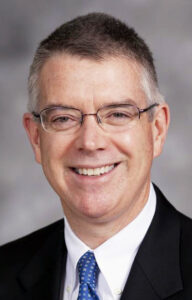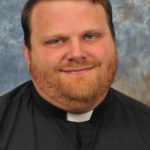By Dr. Tim Millea
Catholicism is related intimately to the history of health care. St. Basil the Great is credited with establishing the first hospital in Caesarea in the late fourth century. Over the ensuing centuries, the care of the sick and dying evolved under the compassion and attention of monks, priests and religious.

In America, hospitals were established from east to west as the nation grew, often founded by religious orders. Over the past half-century, these hospitals have often been absorbed into larger health systems, evolved in a more corporate approach or taken both approaches. The declining number of authentically Catholic hospitals is troubling, particularly for those who seek faith-based care that respects and defends the rights and dignity of each individual.
A potentially bright future for Catholic health care is possible, but not within the current hospital industry. The optimism emanates from those who will be working in hospitals in the years to come. The fastest growing segment of the Catholic Medical Association (CMA) nationwide is medical students, who display an energetic and committed faith and look forward to applying their beliefs to the compassionate care of their future patients. However, conflicting trends may jeopardize their hopes and dreams as Catholic physicians.
While a burgeoning number of faithful Catholic young people look forward to a career in health care, simultaneously, the number of authentically Catholic health systems, hospitals and clinics is decreasing. These aspiring professionals will face important questions. Do I choose a different career? Can I ignore my beliefs and still practice in good conscience? How can I find a job where my beliefs are respected and defended?
Two approaches to correcting this mismatch are possible. The “top down” approach is a return to authentically Catholic care in hospitals. Institutions that may have allowed unethical practices such as sterilizations would correct their policies and once again be consistent with sound ethics and morals. A return to these principles and policies would be slow and arduous. However, imagine a hospital grounded in the truth of our faith and a sincere interest in every patient as a child of God, yet fully armed with 21st-century technology. This effort would require courage from hospital leadership that would turn away from the secular and corporate health care industry dominating the American system. The reward for this commitment would be a flood of patients who lament the depersonalization of medicine and long to be treated with respect and heartfelt care.
The second approach is from the “bottom up.” It promotes and supports the establishment of faithful Catholic primary care clinics that adhere to the “Ethical and Religious Directives for Catholic Health Care Services” (ERDs), authored by the U.S. Conference of Catholic Bishops. With time and commitment, these foundational clinics will expand their patient base and medical specialists with similar values will be attracted to practice in this wholly Catholic environment. Ultimately, a threshold will be reached as specialists require more than outpatient clinics. Establishment of multispecialty clinics, ambulatory surgery centers and acute care hospitals will be necessary. The common denominator for the evolution of this system is the glue that holds it together: a commitment to Christ-centered care for others.
Admittedly, either approach or a combination of the two is a daunting prospect that requires much prayer, diligence and perseverance. However, the desire for meaningful and personalized relationships between patients and physicians is clear. It is the same desire that brought the earliest Christians to the faith 2,000 years ago.
That basic human need has not changed.
A recent event provides a bright light of optimism. At the CMA’s Annual Education Conference in Denver in early September, Benedictine College in Atchison, Kansas, announced plans to establish a new osteopathic medical school, in cooperation with Catholic Healthcare International. The organization takes its inspiration from the work of St. Padre Pio and his long-established hospital in Italy, the Home for the Relief of Suffering. The new medical school will bear the name of the saint: Saint Padre Pio Institute for the Relief of Suffering, School of Osteopathic Medicine. Students will enter an immersive Catholic curriculum, including required courses in Theology of the Body and scheduled individual spiritual direction.
The project planned at Benedictine is an important step in an increasing interest in the reestablishment of authentically Catholic health care. It will be a long and difficult process but the positive impact of such an effort justifies the hard work and ongoing prayers for success. St. Paul’s letter to the early Christians in Galatia, neighbors to the land where St. Basil opened his hospital 300 years later, encourages us to this day: “Let us not become weary in doing good, for at the proper time we will reap a harvest if we do not give up.”
(Dr. Tim Millea is president of the St. Thomas Aquinas Medical Guild and a member of St. Paul the Apostle Parish in Davenport.)











